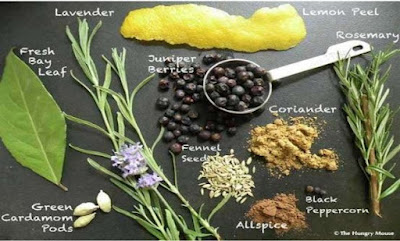Okay, my last Blog was
on gin….so how could it not be followed up with tonic? After all, I am in
England. Prior to coming to Europe, I actually studied how to make your own tonic. As a
medical professional I had long known that tonic’s base ingredient (quinine)
had been used to treat malaria. But, there was an entire body of
knowledge about 21st century tonic I didn’t know. For example, who knew
that tonic water contains the same amount of sugar as a coke?
I have a client who has
long ordered a special tonic water online that is nearly impossible to find in
stores. She swears that it makes the best gin and tonic. This got
me thinking. What makes a great tonic? I always buy Schweppes
or Canada Dry or whatever is on sale at the supermarket. After a long
internet search on the best tonics I now see that I have been way off base.
Most tonic water
purchased at the supermarket is nothing more than carbonated water, processed
sugar, quinine and artificial flavorings. The question of what makes a great tonic for
gin, however, is subjective and depends on the individual’s preference.
Some tonics have floral nuances while others offer notes of citrus or
even herbal notes. There are definitely tonics that feel sweeter. The more quinine tonic contains the more bitter the drink. Some tonics advertise they are made with “botanicals.” This is
marketing-speak for plants. Duh.
I read several articles
promising that homemade tonic beat out all of the store-bought competitors.
So, I was obliged to try. I used the
following recipe with a few tweaks. First, I used a melange of three spices (allspice, star anise and cardomon totalling one teaspoon). Second, I steeped the cinchona bark alone in 2 cups of hot water, and then added it to the citrus mixture after it had been cooked in 3 cups of water. http://www.jeffreymorgenthaler.com/2008/how-to-make-your-own-tonic-water/
Three of us blind tasted the following gin and tonics:
1. Schweppe's diet tonic with Beefeaters
2. Fever Tree Premium Indian Tonic with Beefeaters
3. Home made tonic with Beefeaters
All ingredients were carefully measured and poured into identical glasses with exactly the same number of ice cubes. All ingredients were well chilled prior. A slice of lime was added to each.
One of drinks was a brownish color (like a cup of weak tea). Having seen the color of the homemade tonic (brownish), I immediately knew which one it was. As I had spent hours shopping for ingredients and making the tonic, I was really hoping this one would wow me. It didn't. Nor, did it wow the other two tasters. While it wasn't bad tasting, it just didn't taste like a gin and tonic to any of us. One person didn't like it at all, but two of us thought it could easily be offered as a cocktail by another name.
The Fever Tree is more than ten times the cost of the Schweppe's tonic. One person chose it as their favorite while the other two didn't feel there was an appreciable difference between it and the inexpensive Schweppe's.
Bottom line? Making your own tonic may sound like a fun adventure. It was. I spent about $35 on the ingredients. If anyone wants to make their own let me know and I'll ship you the quinine bark which was the most expensive ingredient. (BTW: you can buy the citric acid at Walmart in the canning section.)













